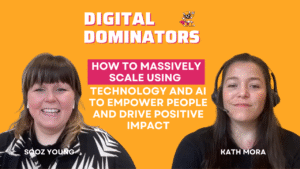No products in the basket.
Data visualization is a critical component of data analysis and interpretation. It involves presenting data in visual formats such as charts, graphs, and maps to enhance understanding of the data’s significance. This approach facilitates the identification of patterns, trends, and outliers, leading to more informed decision-making.
By transforming complex data into visual representations, it becomes more accessible to a broader audience, including those without a background in data analysis. Data visualization can reveal insights and correlations that may not be immediately evident in raw data. For instance, a well-designed graph can illustrate relationships between variables or highlight areas requiring further investigation.
This capability is particularly valuable in fields such as business, finance, and healthcare, where data-driven decisions are crucial. Additionally, data visualization serves as an effective tool for communicating findings and results to stakeholders and decision-makers in a clear and compelling manner, making it essential for effective communication within organizations. In summary, data visualization plays a crucial role in making data more accessible, comprehensible, and actionable.
It enables improved decision-making, uncovers insights, and facilitates effective communication of findings. As a result, it is an indispensable tool for anyone working with data and is essential for driving success in today’s data-driven environment.
Key Takeaways
- Data visualization is important for making complex data more understandable and actionable
- Choosing the right data visualization tools is crucial for effectively communicating insights
- Tips for creating stunning data visualizations include simplifying, focusing on the story, and using appropriate visuals
- Utilizing color and design principles can enhance the effectiveness of data visualizations
- Incorporating interactive elements can engage and empower users to explore data on their own
- Best practices for presenting data include knowing the audience, telling a clear story, and using the right visual aids
- The future of data visualization is likely to involve more advanced technology, real-time data, and immersive experiences
Choosing the Right Data Visualization Tools
Assessing Project Requirements
First and foremost, it’s important to assess the specific needs and requirements of the project at hand. Different tools offer different features and capabilities, so it’s crucial to select one that aligns with the goals of the visualization.
Tool Selection Based on Goals and Expertise
For example, if the goal is to create interactive visualizations for a web application, tools such as D3.js or Tableau may be more suitable. On the other hand, if the focus is on creating static visualizations for print or presentation, tools like Adobe Illustrator or Microsoft Excel may be more appropriate. Another important consideration when choosing data visualization tools is the level of expertise and familiarity with the tool.
Scalability and Flexibility
Some tools may have a steeper learning curve and require programming knowledge, while others may be more user-friendly and accessible to beginners. It’s essential to select a tool that matches the skill level of the user to ensure efficient and effective use of the tool. Additionally, it’s important to consider the scalability and flexibility of the tool. Will it be able to handle large datasets? Can it accommodate different types of visualizations? These are important questions to ask when evaluating potential tools.
Ultimately, the right data visualization tool will be one that meets the specific needs of the project, is suitable for the user’s skill level, and offers the necessary scalability and flexibility.
Tips for Creating Stunning Data Visualizations

Creating stunning data visualizations requires careful consideration of design principles, storytelling, and audience engagement. One key tip is to focus on simplicity and clarity. Avoid cluttering the visualization with unnecessary elements and aim to convey the message as clearly as possible.
This can be achieved through thoughtful use of color, layout, and typography. Another important tip is to tell a compelling story with the data. A good data visualization should not only present the data but also provide context and meaning.
Consider the narrative you want to convey and use the visualization to guide the audience through the story. This can be achieved through annotations, captions, and titles that provide additional information and insights. Furthermore, it’s essential to consider the audience when creating data visualizations.
Different audiences may have different levels of familiarity with the subject matter, so it’s important to tailor the visualization to their needs. This may involve simplifying complex concepts for a general audience or providing more detailed information for experts in the field. In conclusion, creating stunning data visualizations requires attention to simplicity, storytelling, and audience engagement.
By focusing on these key aspects, it’s possible to create visualizations that are not only visually appealing but also effectively communicate insights and findings.
Utilizing Color and Design Principles
Color and design principles play a crucial role in creating effective data visualizations. When it comes to color, it’s important to use it purposefully and strategically. Color can be used to highlight important information, differentiate between categories, and create visual hierarchy.
However, it’s essential to use color in a way that enhances understanding rather than detracts from it. This means avoiding overly bright or clashing colors that can be distracting or difficult to interpret. In addition to color, design principles such as balance, contrast, and alignment are also important considerations when creating data visualizations.
Balance ensures that elements are distributed evenly throughout the visualization, while contrast helps to create emphasis and guide the viewer’s attention. Alignment ensures that elements are positioned in a cohesive and organized manner, which contributes to overall clarity and readability. Furthermore, it’s important to consider accessibility when utilizing color and design principles in data visualizations.
This means ensuring that visualizations are accessible to individuals with color vision deficiencies and other disabilities. This can be achieved through thoughtful use of color palettes, patterns, and alternative text descriptions. In conclusion, color and design principles are essential components of effective data visualizations.
By using color purposefully, applying design principles thoughtfully, and considering accessibility, it’s possible to create visualizations that are not only visually appealing but also clear, informative, and inclusive.
Incorporating Interactive Elements
Incorporating interactive elements into data visualizations can greatly enhance engagement and understanding. Interactive visualizations allow users to explore the data in a more dynamic and personalized way, which can lead to deeper insights and discoveries. One way to incorporate interactivity is through tooltips that provide additional information when hovering over specific data points.
This can help users understand the context of the data and uncover hidden patterns or trends. Another interactive element to consider is filtering and sorting options that allow users to customize their view of the data. This can be particularly useful when dealing with large datasets or when users want to focus on specific subsets of the data.
By providing these options, users can tailor the visualization to their needs and interests, leading to a more personalized and engaging experience. Furthermore, interactive elements can also include animations that help illustrate changes over time or transitions between different views of the data. Animations can make complex concepts more digestible and engaging, helping users follow the narrative of the visualization more easily.
In conclusion, incorporating interactive elements into data visualizations can greatly enhance engagement and understanding. By providing tooltips, filtering options, sorting capabilities, and animations, it’s possible to create visualizations that are not only informative but also dynamic and engaging for users.
Best Practices for Presenting Data

Providing Context and Explanation
One key practice is to provide context and explanation for the visualization. This involves introducing the topic or problem being addressed by the data, as well as providing background information on the dataset itself. By setting the stage for the visualization, it becomes easier for the audience to understand its significance and relevance.
Focusing on Key Insights
Another best practice is to focus on key insights and takeaways from the visualization. Rather than overwhelming the audience with every detail of the data, it’s important to highlight the most important findings and trends. This can be achieved through annotations or callouts that draw attention to specific points of interest within the visualization.
Considering Format and Delivery
Furthermore, it’s essential to consider the format and delivery method of the presentation. Whether presenting in person or online, it’s important to ensure that the visualization is clear and visible to all audience members. This may involve using large fonts for text labels or ensuring that colors are easily distinguishable for those viewing on different devices.
By following these practices, it’s possible to effectively communicate findings and insights through data visualizations.
The Future of Data Visualization
The future of data visualization holds exciting possibilities as technology continues to advance and evolve. One trend that is likely to shape the future of data visualization is the increasing use of augmented reality (AR) and virtual reality (VR) technologies. These technologies have the potential to transform how we interact with data by creating immersive experiences that allow users to explore and interact with visualizations in new ways.
Another trend that is likely to impact the future of data visualization is the growing emphasis on real-time or live data visualizations. With advancements in data streaming technologies, it’s becoming increasingly feasible to create visualizations that update in real time as new data becomes available. This has significant implications for fields such as finance, healthcare, and IoT (Internet of Things), where real-time insights can drive immediate action.
Furthermore, as artificial intelligence (AI) continues to advance, we can expect to see more sophisticated tools for automated data visualization. AI-powered systems have the potential to analyze datasets and generate visualizations autonomously, saving time and effort for users while also uncovering insights that may have been overlooked. In conclusion, the future of data visualization holds promise for exciting developments in AR/VR technologies, real-time visualizations, and AI-powered tools.
As these trends continue to unfold, we can expect data visualization to become even more immersive, dynamic, and accessible than ever before.
If you’re interested in learning more about digital marketing strategies, check out this article on The 7 Most Effective Digital Marketing Strategies in 2024. It provides valuable insights and tips for small businesses looking to enhance their online presence and reach their target audience effectively. Visualising your data is just one aspect of a successful digital marketing strategy, and this article can help you take your efforts to the next level.
FAQs
What are some popular tools for visualizing data?
Some popular tools for visualizing data include Tableau, Microsoft Power BI, Google Data Studio, D3.js, and Python libraries such as Matplotlib and Seaborn.
What are the benefits of visualizing data?
Visualizing data helps to identify patterns, trends, and outliers in the data. It also makes it easier to communicate complex information and insights to a wider audience.
What are some tips for creating stunning data visualizations?
Some tips for creating stunning data visualizations include choosing the right type of chart or graph for the data, using appropriate colors and fonts, simplifying the design, and adding meaningful annotations.
How can data visualization help in decision-making?
Data visualization can help in decision-making by providing a clear and concise representation of the data, which allows decision-makers to quickly grasp the key insights and make informed decisions based on the data.
What are some common types of data visualizations?
Common types of data visualizations include bar charts, line graphs, pie charts, scatter plots, heat maps, and treemaps. Each type of visualization is suited for different types of data and insights.


